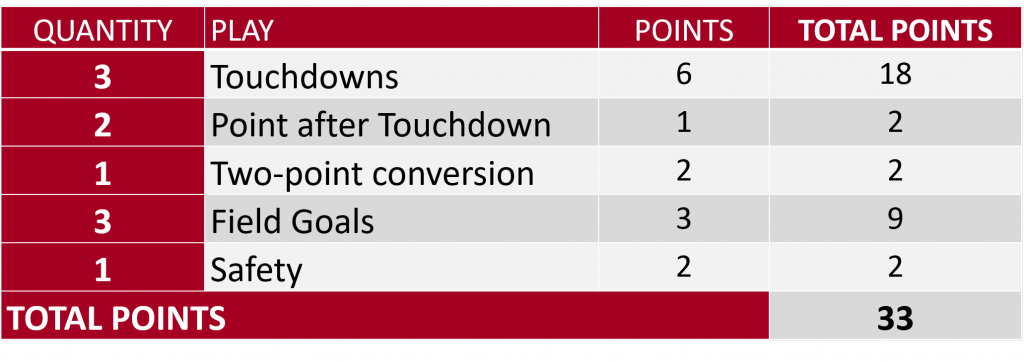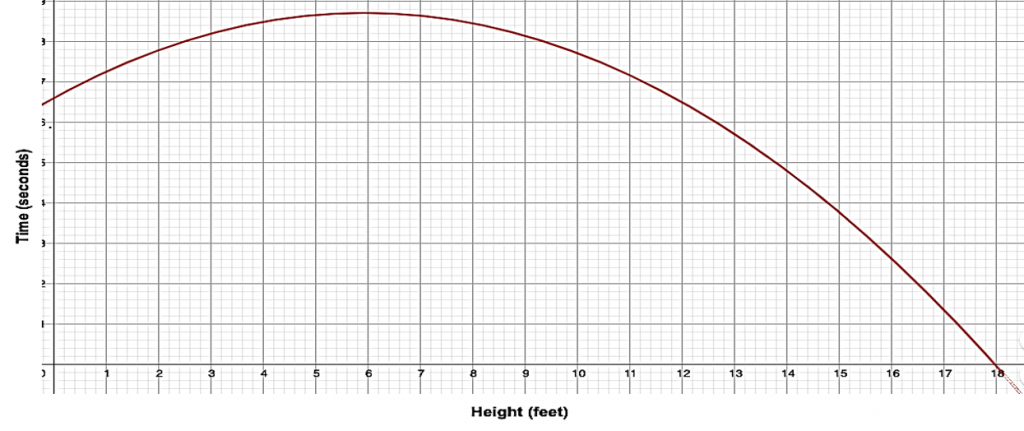Yes Virginia, Football Analytics personnel do exist
by Cathie Maglio, Blended Learning Specialist
I love the fall. Not for the reasons you might think– cool mornings, warm afternoons, leaves turning on the trees, fresh apple cider donuts. I do like those things, but I really love fall because it is football season. I have been a football fan ever since I can remember.
My dad was a big football fan. He had played football for the local high school team and I loved listening to his stories about his playing days. He was a dyed-in-the-wool Patriots fan all the way back to when they were the Boston Patriots. He watched the team go from the cellar to the rooftop of the league.
He watched the games every weekend, college and pro. In our house, Sundays meant football and our schedule revolved around game time. I loved hanging out with my dad and if that included watching football, that was fine with me. Thanks to him I fell in love at a tender age with the Fighting Irish of Notre Dame. When they are on the field, you’ll find me in front of the screen.
As a budding math geek, I began to notice all the math involved in football. There were simple things like adding up the total yards gained by a running back or passing yards for a quarterback. There were complicated things like calculating the odds of a run or pass play depending on how the players lined up at the line of scrimmage. I came to enjoy constructing football math problems. When I started teaching, that Sunday pastime became a Monday asset. Here are some examples of problems that can be used in a class. (Answers appear at the end.)
PROBLEM 1: A running back ran for 92 positive yards and 17 negative yards. What was the running back’s total yards for the game?
PROBLEM 2: A quarterback threw 5 passes on a scoring drive: 15 yards, -2 yards, 34 yards, -3 yards, 20 yards. What was the total passing yards on the drive?
PROBLEM 3: A receiver caught 4 passes of 10 yards, 2 passes of 15 yards, 1 pass of 55 yards. What was the receiver’s total yards?
PROBLEM 4: Here are all the possible scoring plays and their points. How can a team score 33 points? PROBLEM 5: The parabola of a pass thrown by a quarterback to a receiver can be modelled by the equation

h = 6.6 + 0.71t – 0.06t2.

- a. What is the height of the ball when the quarterback releases it, and what is its height when the receiver catches it 7 seconds later
- b. Graph the path of the ball.
- c. If the receiver fails to catch the ball, how many seconds does it take for the ball to hit the ground?
These are just a few applications of math in football. There are many others. How does the angle of the football at the kick affect the height of the punt? How does the wind affect passes and kicks?
Football teams now have Football Analytics personnel. One of their jobs is predicting the percent of times a play is run depending on where a certain player lines up at the line of scrimmage. For example, if a tight end is lined up in the slot position it could mean that the team runs a pass play 80% of the time. All sports teams are constantly finding new ways to use math to gain a competitive edge. Why shouldn’t schools tap into students’ love of sports to kindle an interest in math? What could be cooler than predicting Bill Belichick’s next play?
-
ANSWERS
- PROBLEM 1: 92 – 17 = 75 yards.
- PROBLEM 2: 15 –2 + 34 – 3 + 40 = 84 yards
- PROBLEM 3: 4(10) + 2(15) + 55 = 125 yards.
- PROBLEM 4: One possible combination:

- PROBLEM 5:
- a. 6.6 ft; 4.2 ft
- b.

- c. About 11 seconds
Have fun decoding Belichick’s next game plan!





